by Louise Irvine
Museum curators around the world recently engaged in a "battle of the bottoms" on social media and the best behinds were featured in the British national press. The challenge inspired us to seek out some of our most captivating candidates in our porcelain figurine collection from the Art Deco era.
We were spoiled for choice at WMODA as nudes have inspired ceramic artists for centuries. There are classical goddesses in Parian ware from distinguished Victorian sculptors as well as striking Art Deco figurines from the roaring twenties and glamorous thirties. Some of the most stylish porcelain nudes of the era were produced by Hutschenreuther in Selb, Germany.
Between the wars in Weimar Germany, the body culture movement advocated nude dancing and gymnastics. The German silent film Wege zu Kraft und Schonheit which translates as Ways to Strength and Beauty contrasted the decadent lifestyles of Berlin and other large cities with a pursuit of health conforming with nature. The 1925 movie became a cult and the modern body, radiating freedom and power, was presented by Weimar artists as a manifestation of energy.
Ceramic sculptors at Hutschenreuther captured the spirit of the movie with their striking white porcelain nudes. The Sun Child, balancing on a golden globe and stretching out to worship the sun, is the most iconic figurine of this era. She was modeled by Karl Tutter for the Hutschenreuther factory and was produced in several different sizes and color variations, including white blanc de chine and matte flesh tones. The Sun Child was such a classic that the figurine was reissued in 2000 as The Spirit of the Millennium in a limited edition of 2000.
Karl Tutter (1883-1969) was born in Austria and studied at the Vienna Academy of Fine Arts. During the First World War, he was a prisoner of war in Eastern Siberia, where he learned modeling. Tutter worked for the Royal Bayreuth and Sitzendorf porcelain factories before joining Hutschenreuther in 1922 to assist Carl Werner in the development of a new figure collection. Tutter’s subjects ranged from playful putti to stylized nudes and his expressive sculptures were very successful.
Carl Werner (1895-1980) studied in Weimar and joined Hutschenreuther in 1922 as a sculptor and technical director of the new art department. He is acknowledged as one of the leading German figurative sculptors for his studies of movement and the human body. His figures of female athletes balancing golden balls were popular during the Berlin Olympic Games in 1936. Thanks to Werner and Tutter, Hutschenreuther produced some of the most desirable Art Deco figurines made in Germany.
Watch excerpts from the 1925 silent movie Ways to Strength and Beauty.
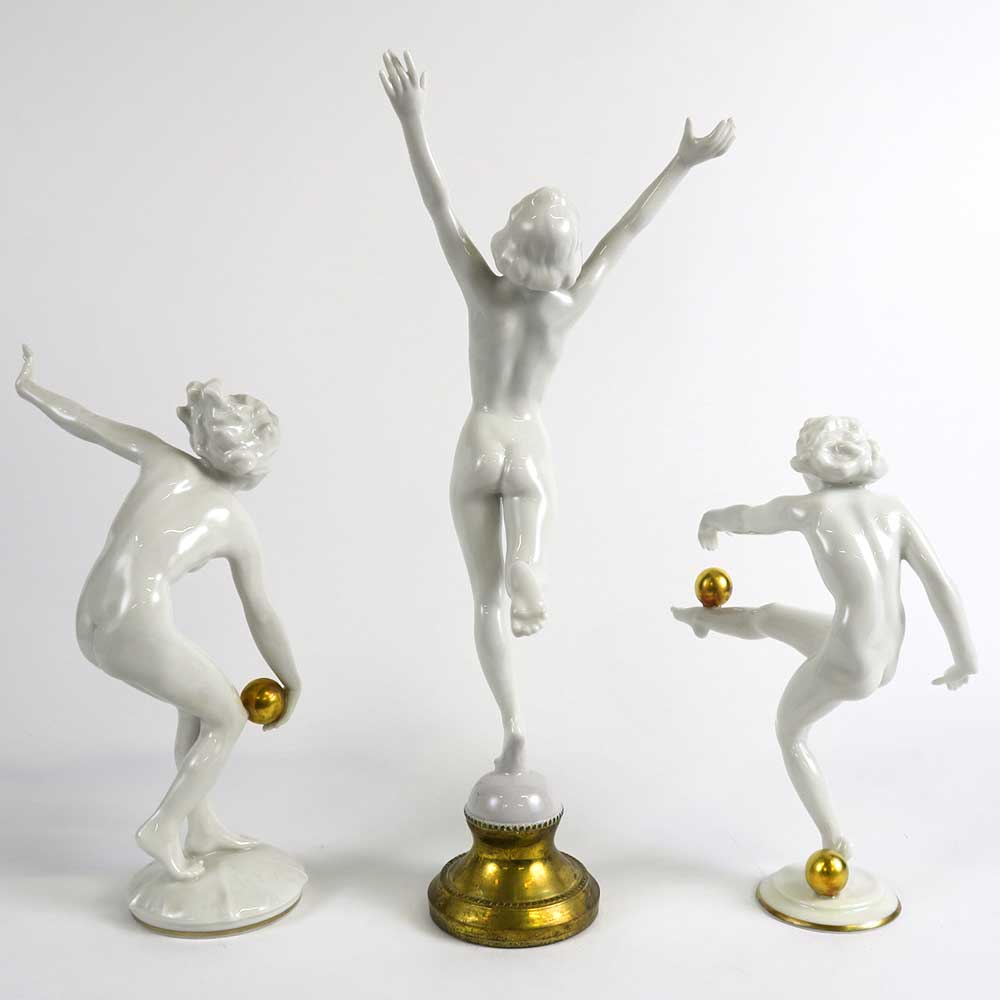
Hutschenreuther Sun Worshippers

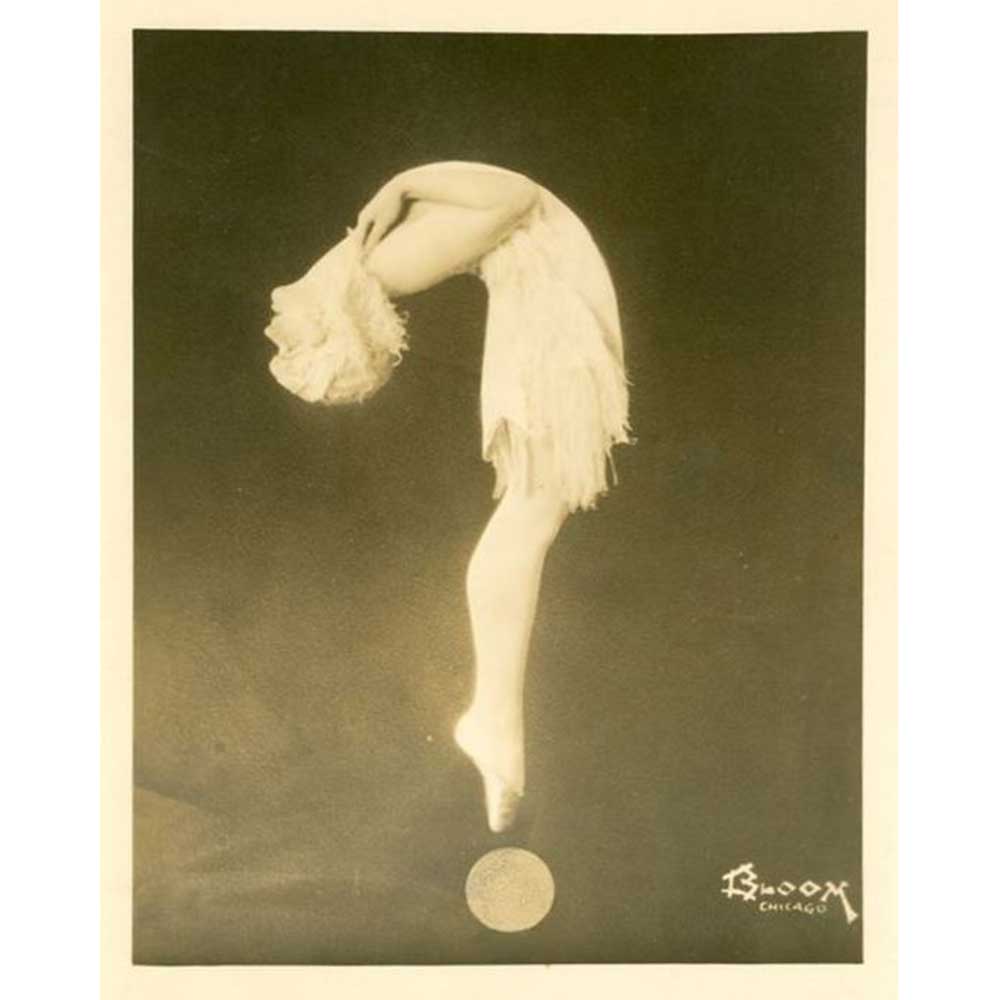
Harriet Hoctor
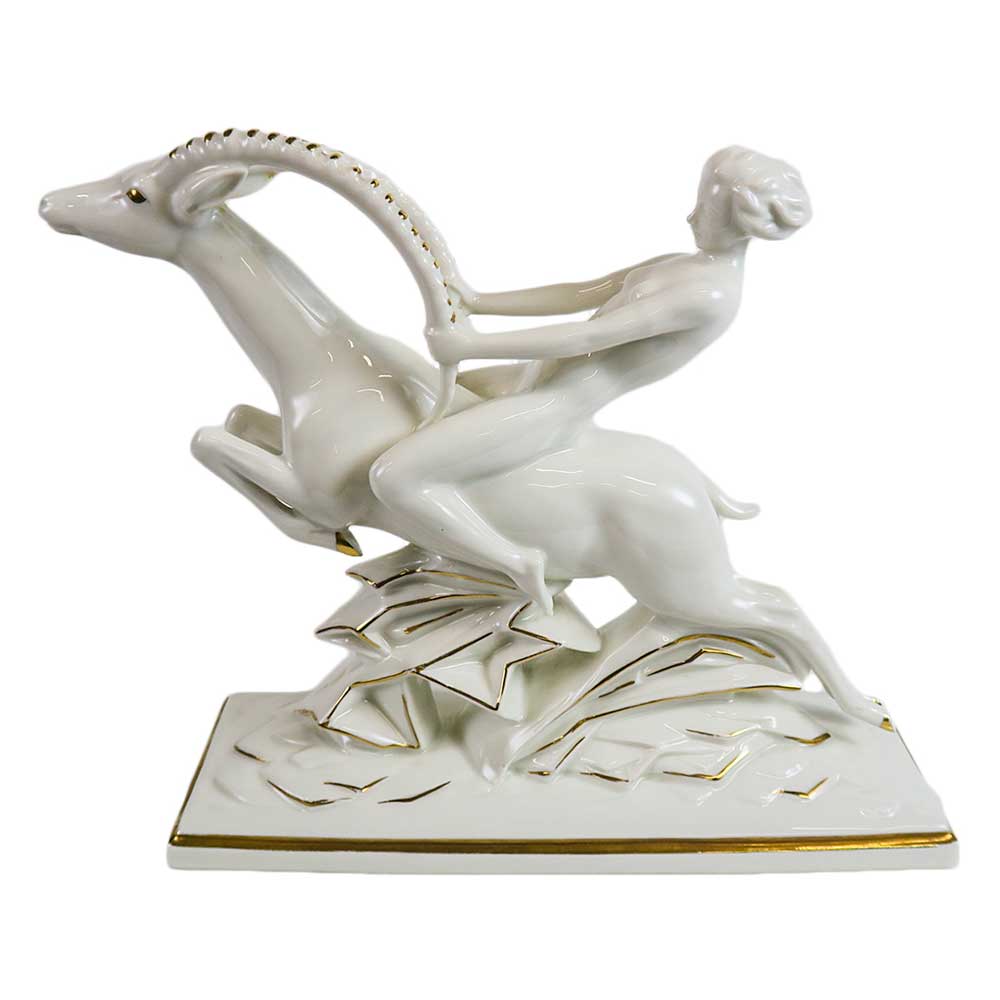
Hutschenreuther Gazelle Rider by M.H. Fritz
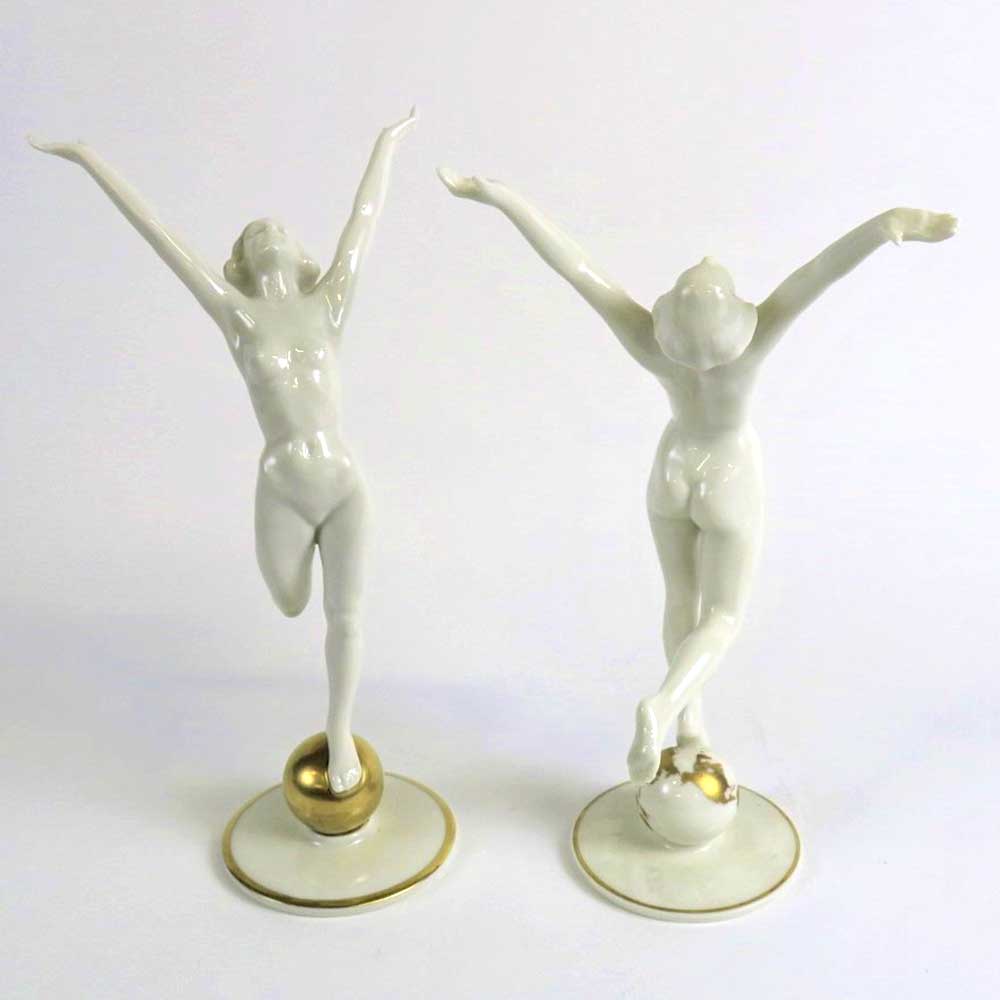
Hutschenreuther Sun Children
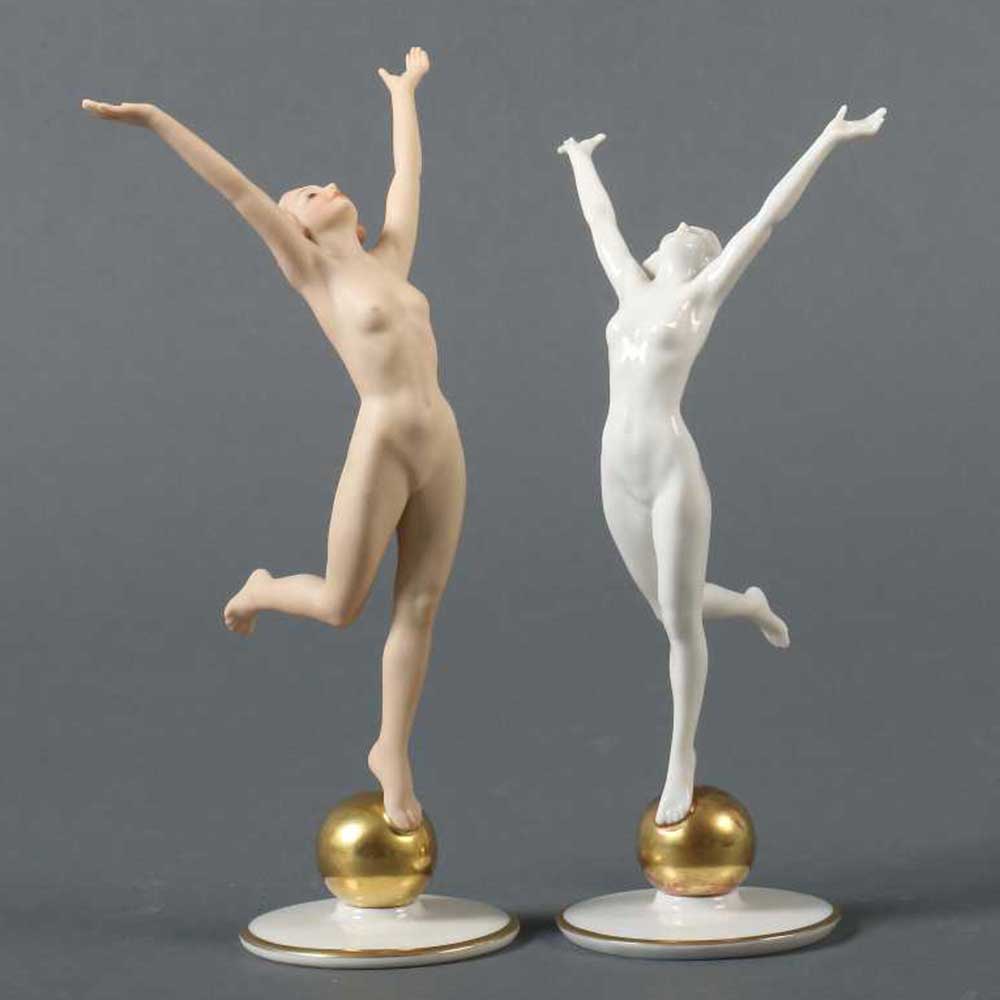
Hutschenreuther Sun Children
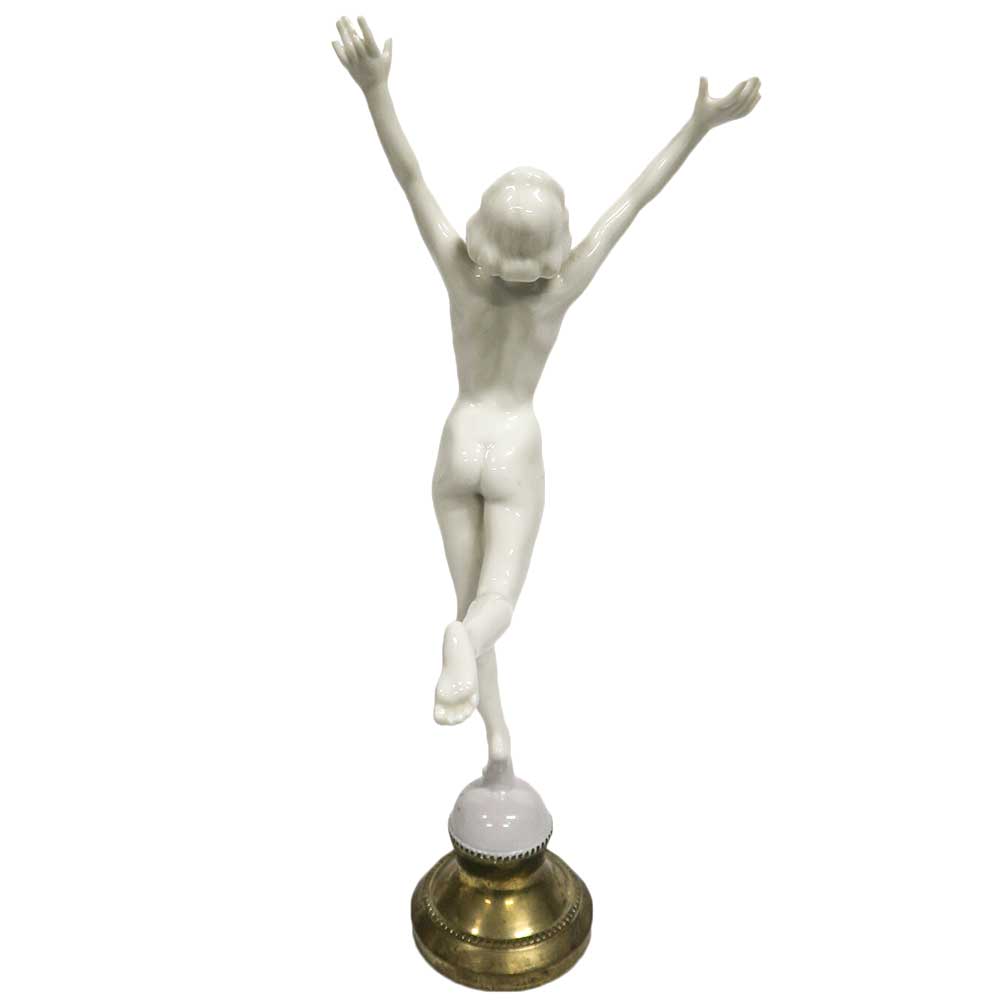
Hutschenreuther Sun Child
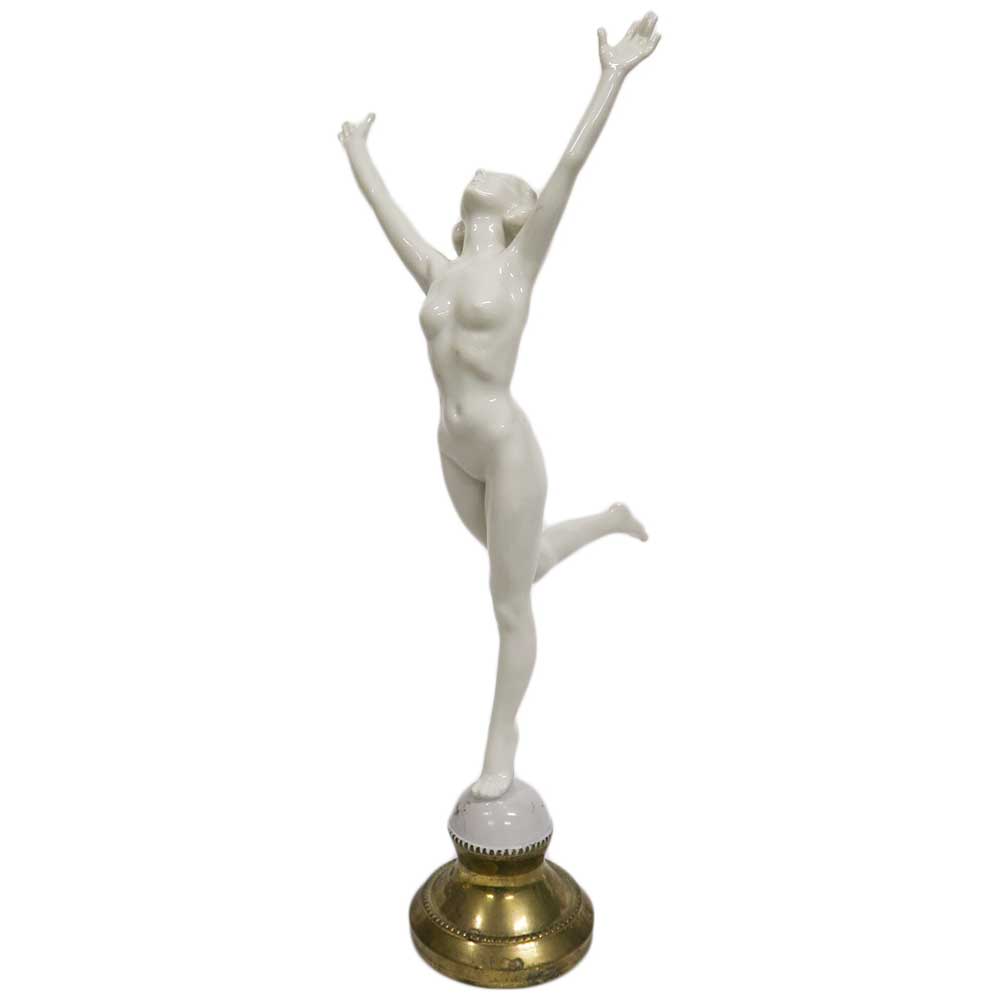
Hutschenreuther Sun Child
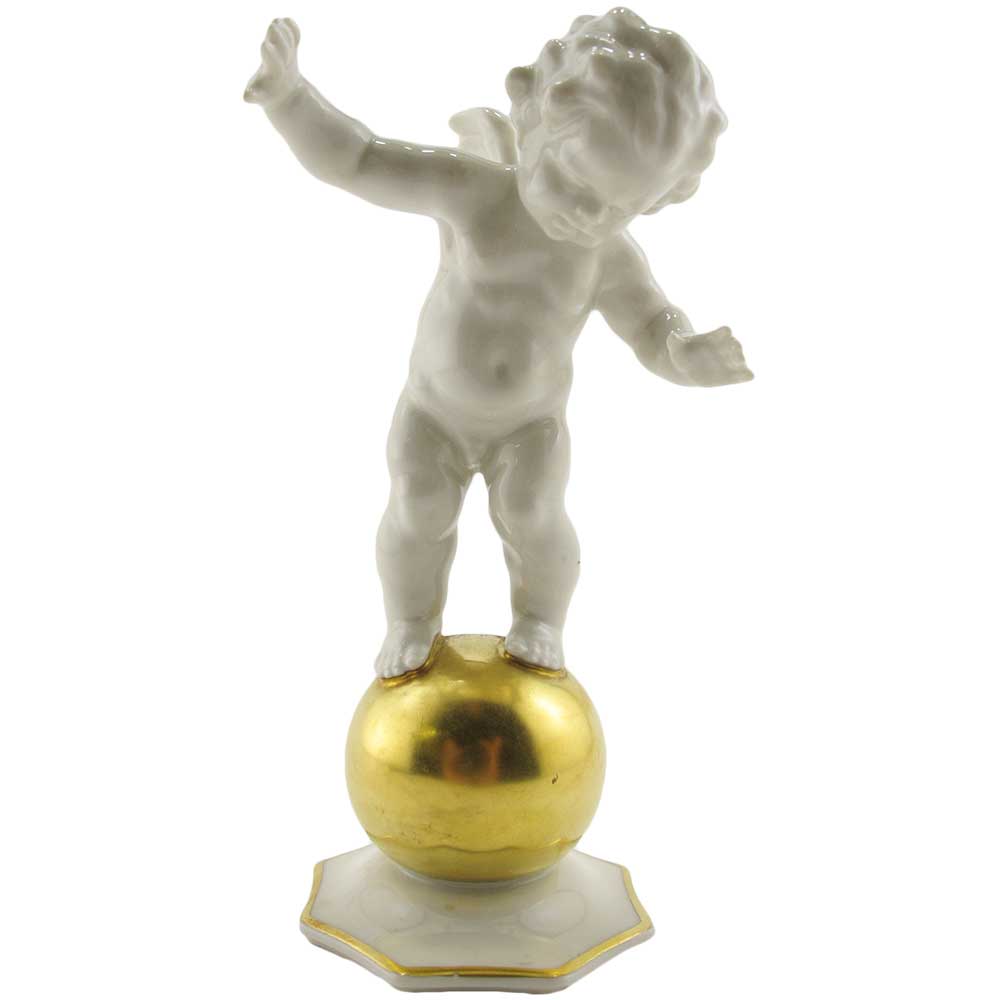
Hutschenreuther Putto by K. Tutter
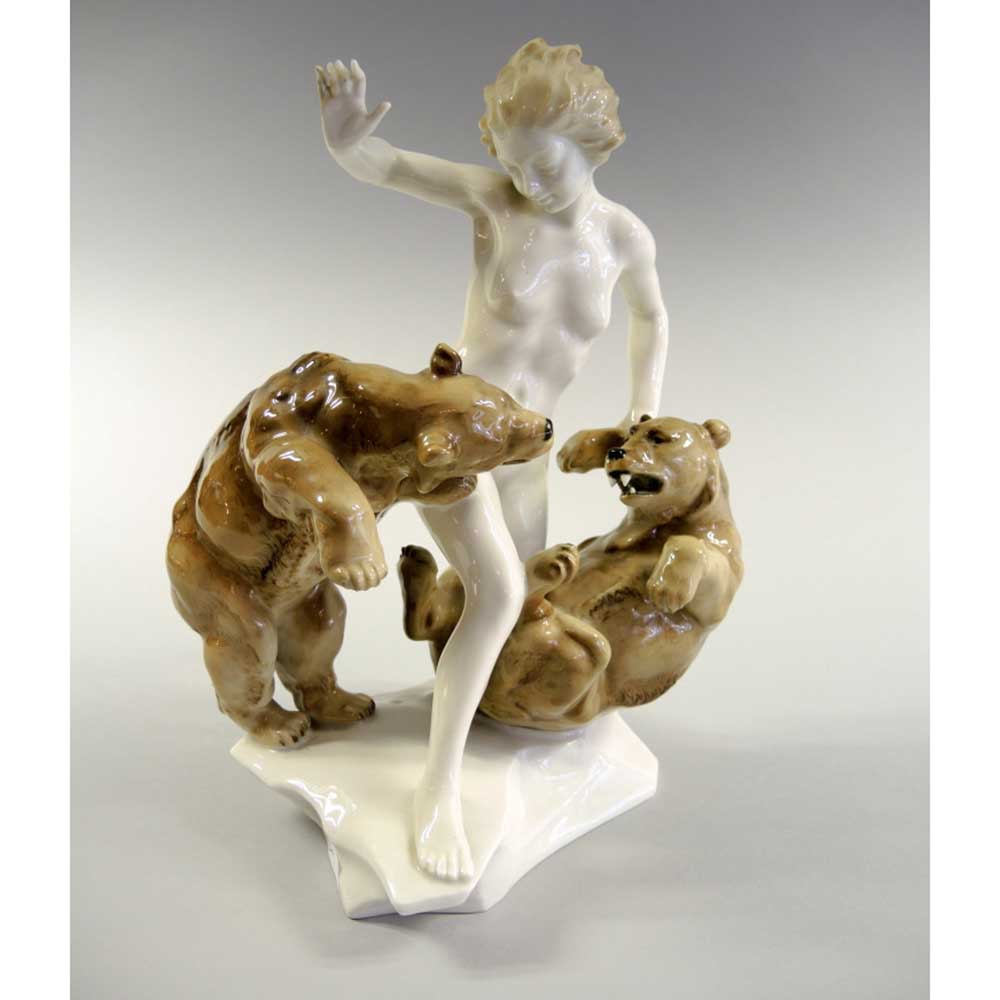
Hutschenreuther Jealousy by K. Tutter
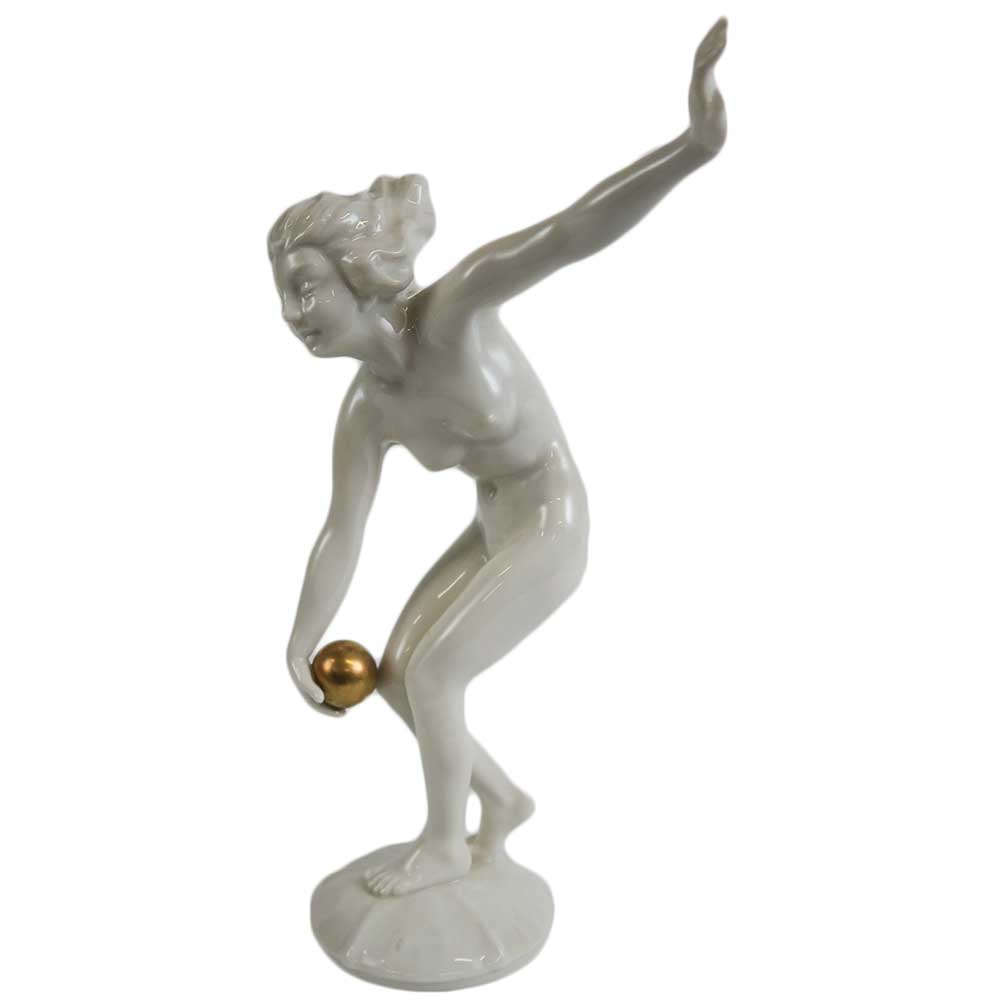
Hutschenreuther Bowler by K. Tutter
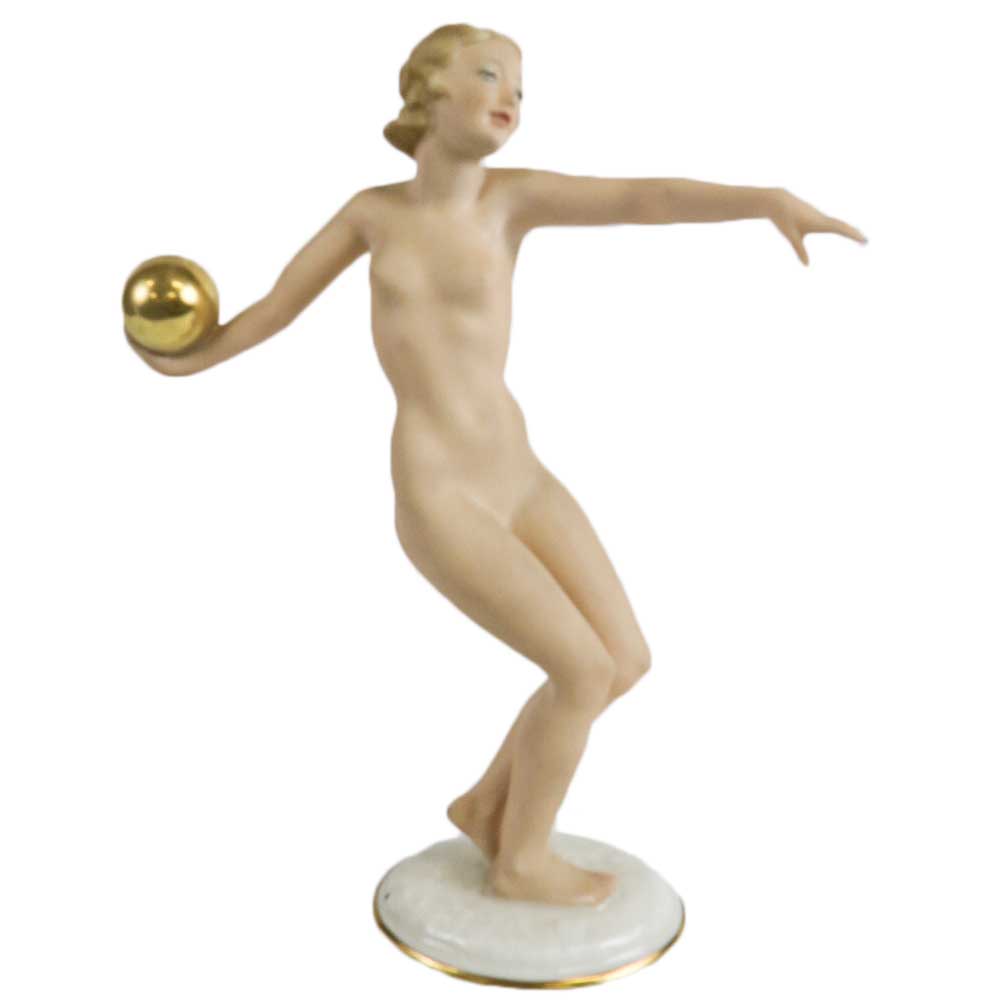
Hutschenreuther Ball Thrower by C. Werner
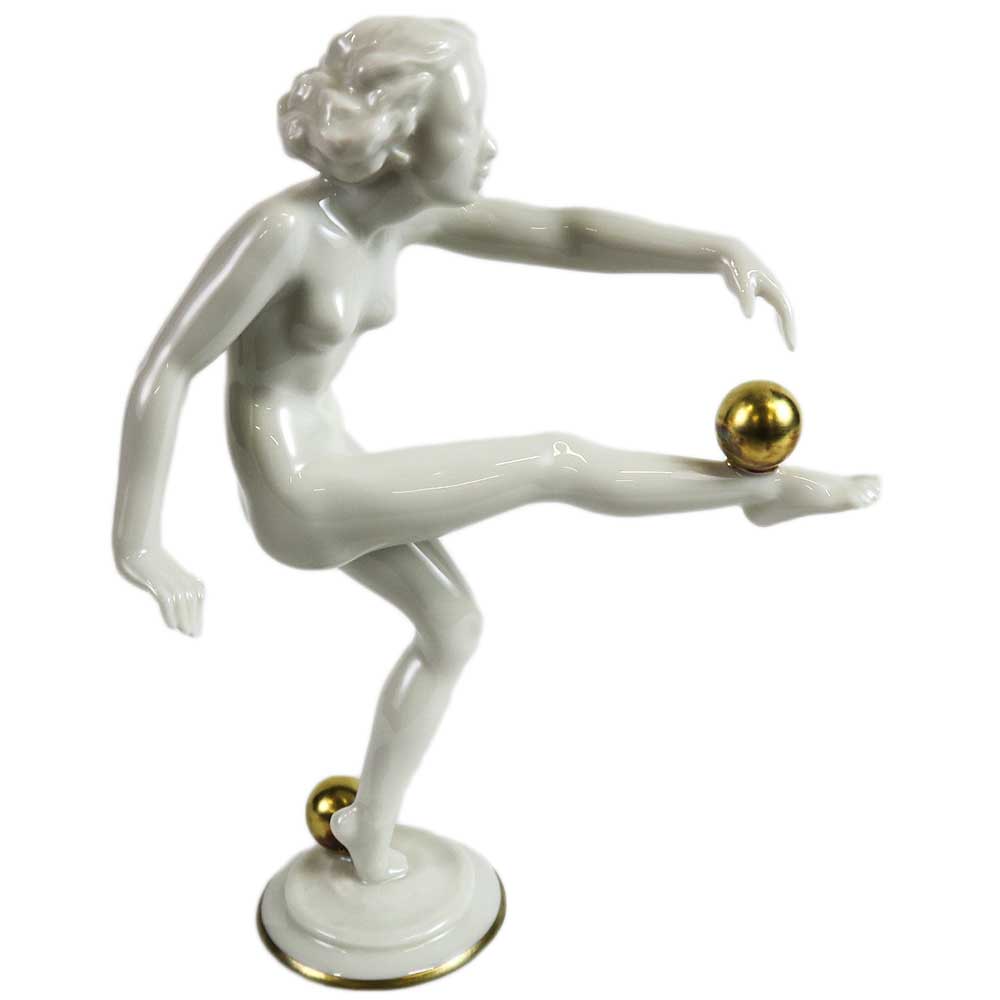
Hutschenreuther Ball Game by C. Werner
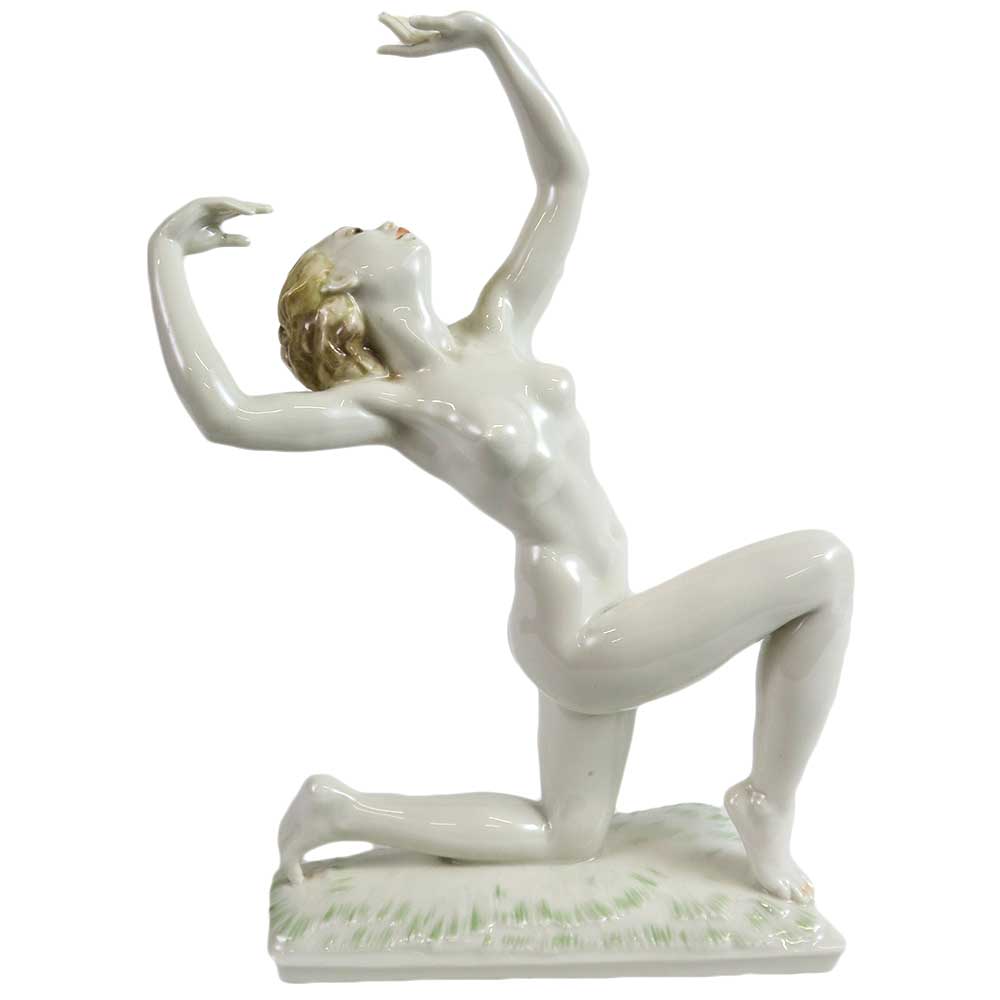
Hutschenreuther Nude by C. Werner
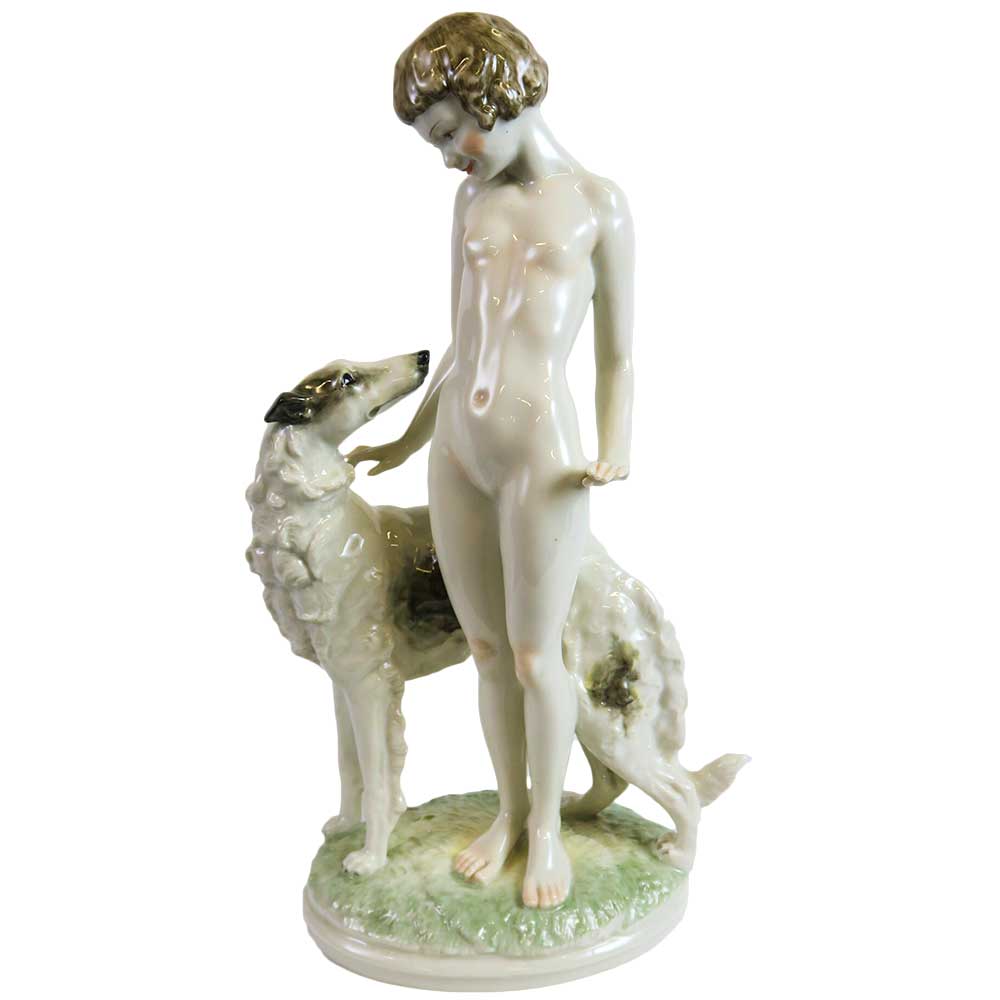
Hutschenreuther Figure with Borzoi by C. Werner
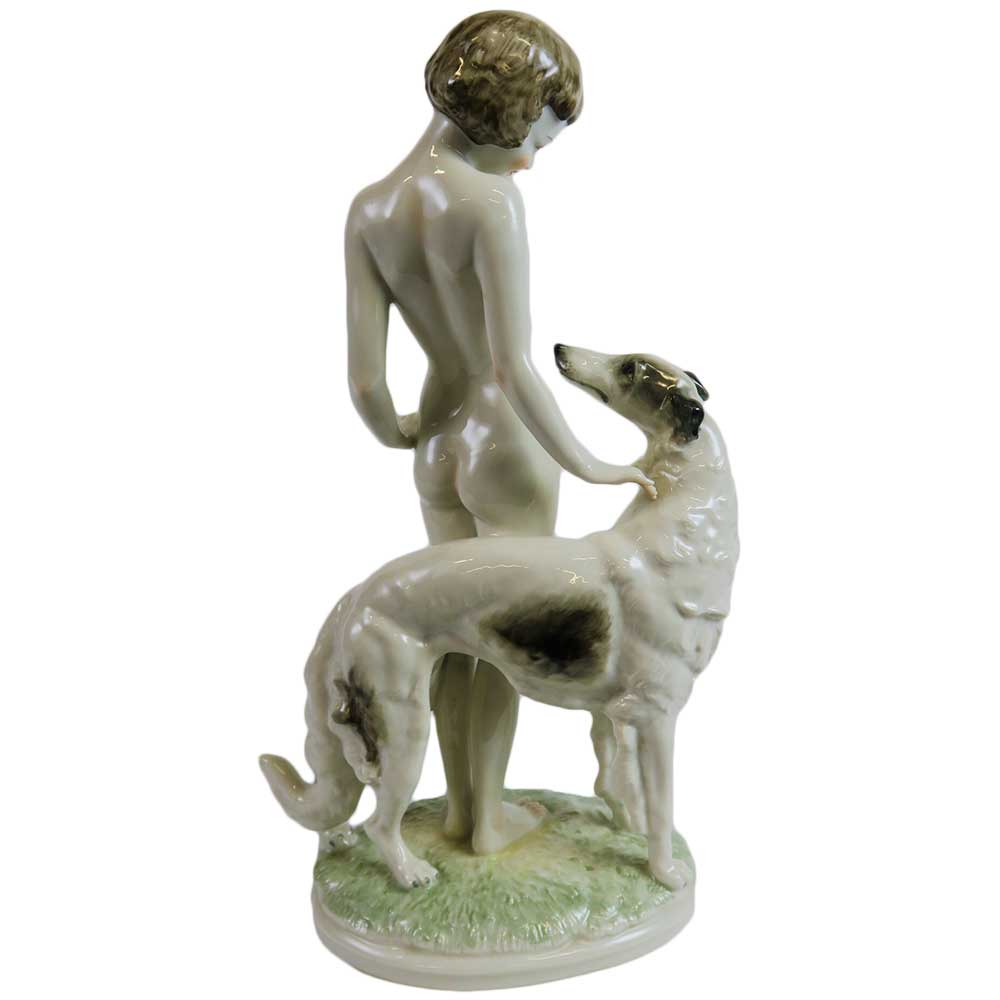
Hutschenreuther Figure with Borzoi back
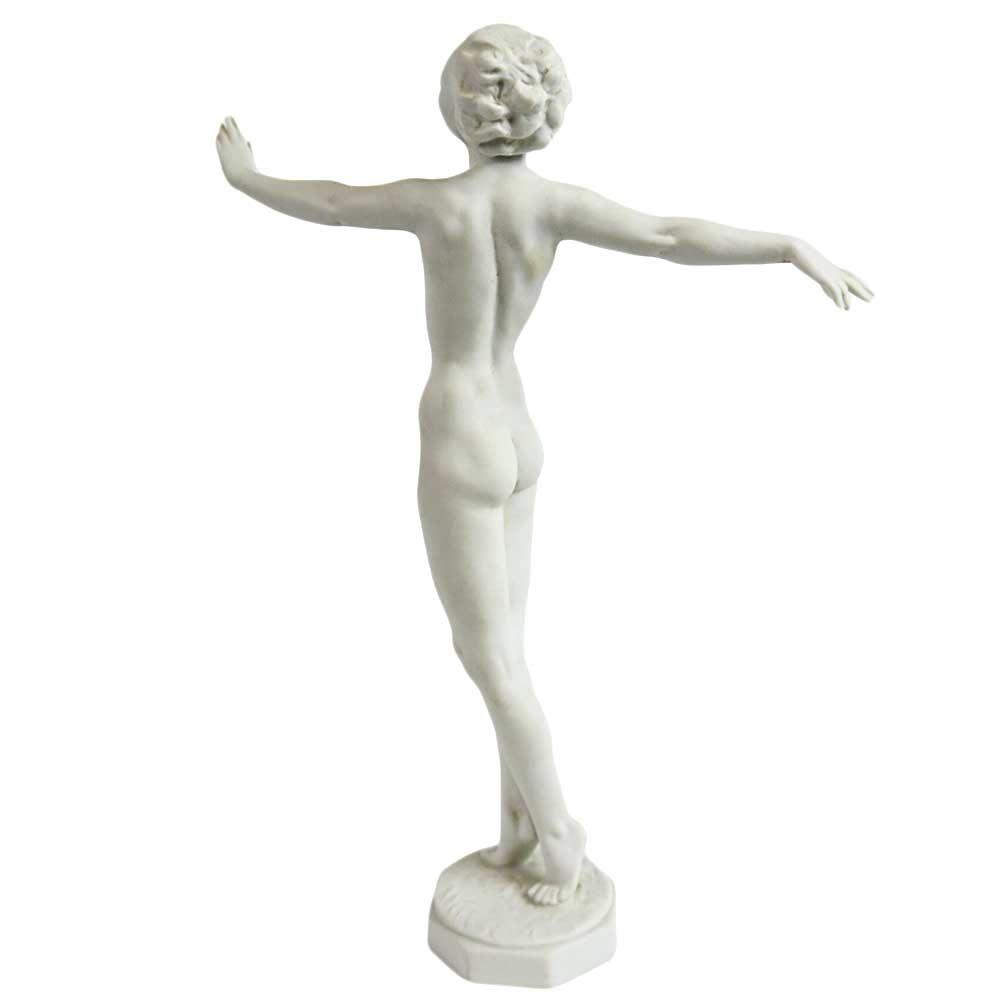
Hutschenreuther Nude by C. Werner
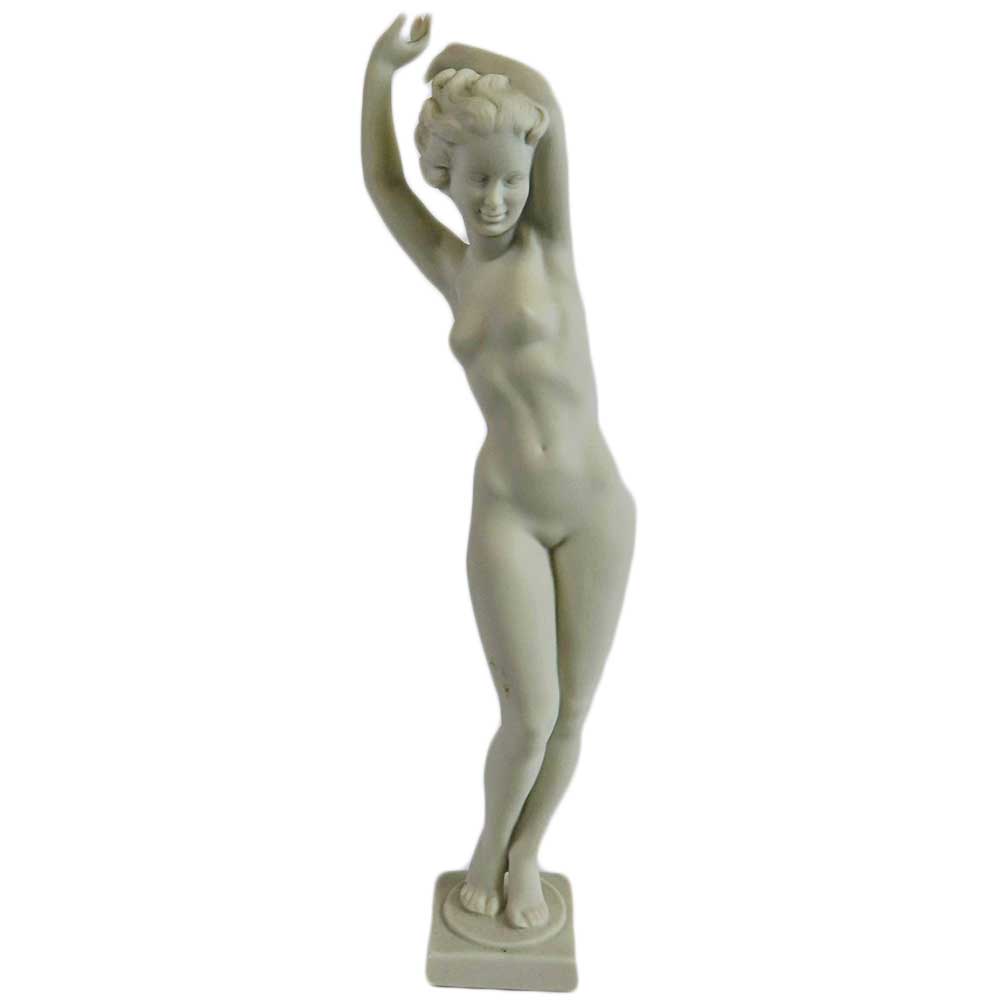
Hutschenreuther Sun Worshipper by C. Werner
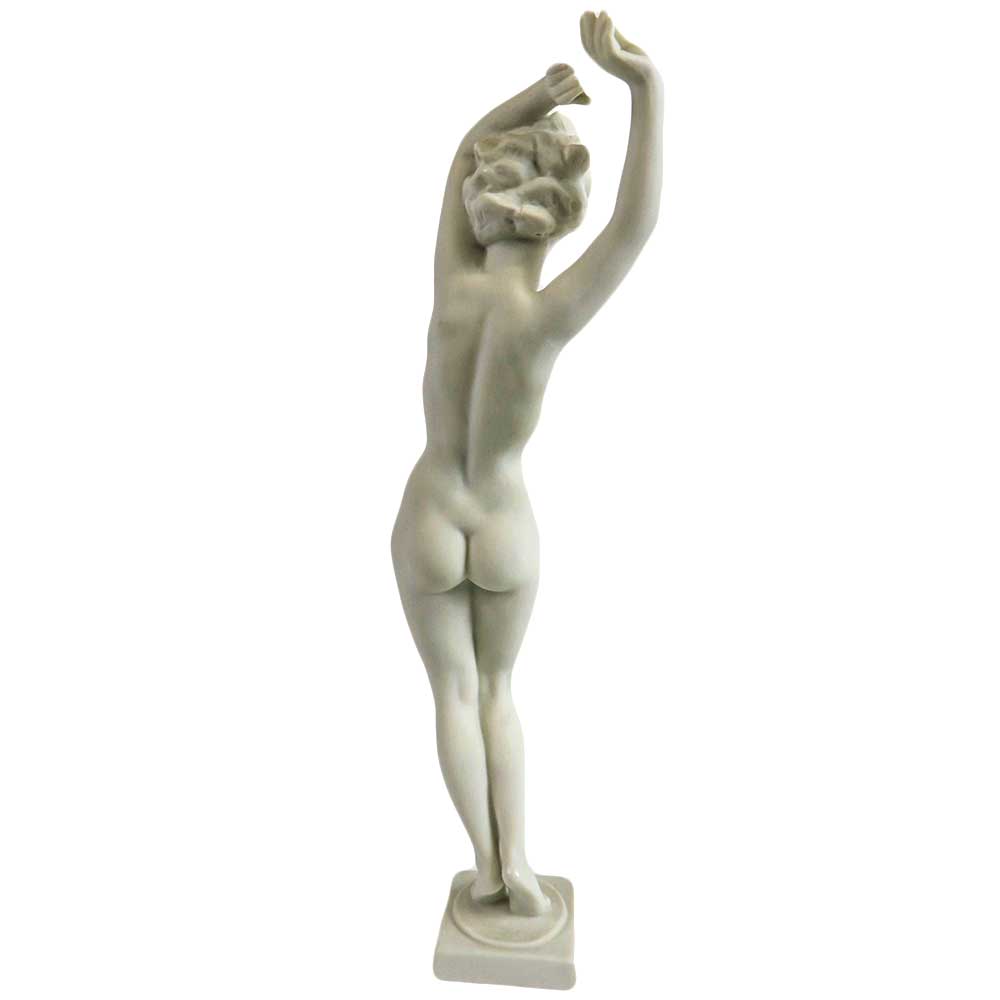
Hutschenreuther Sun Worshipper back
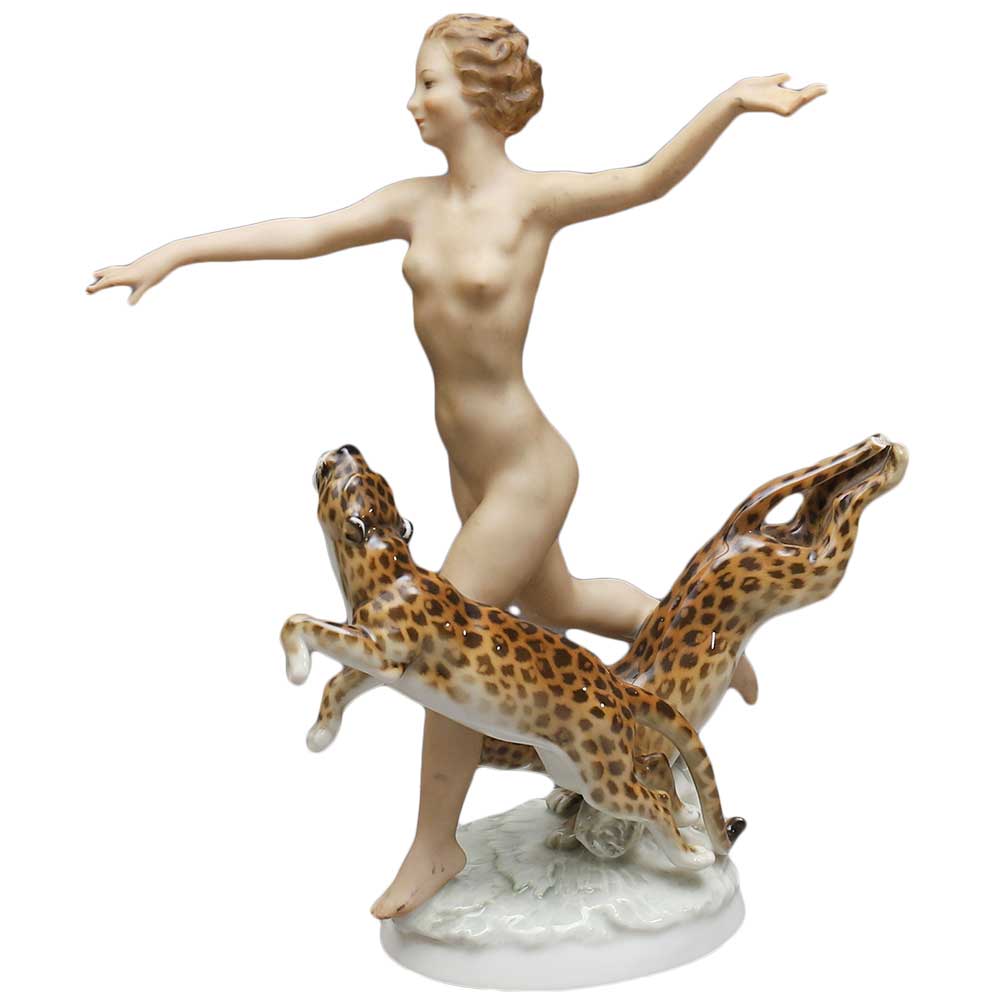
Hutschenreuther Circe by C. Werner
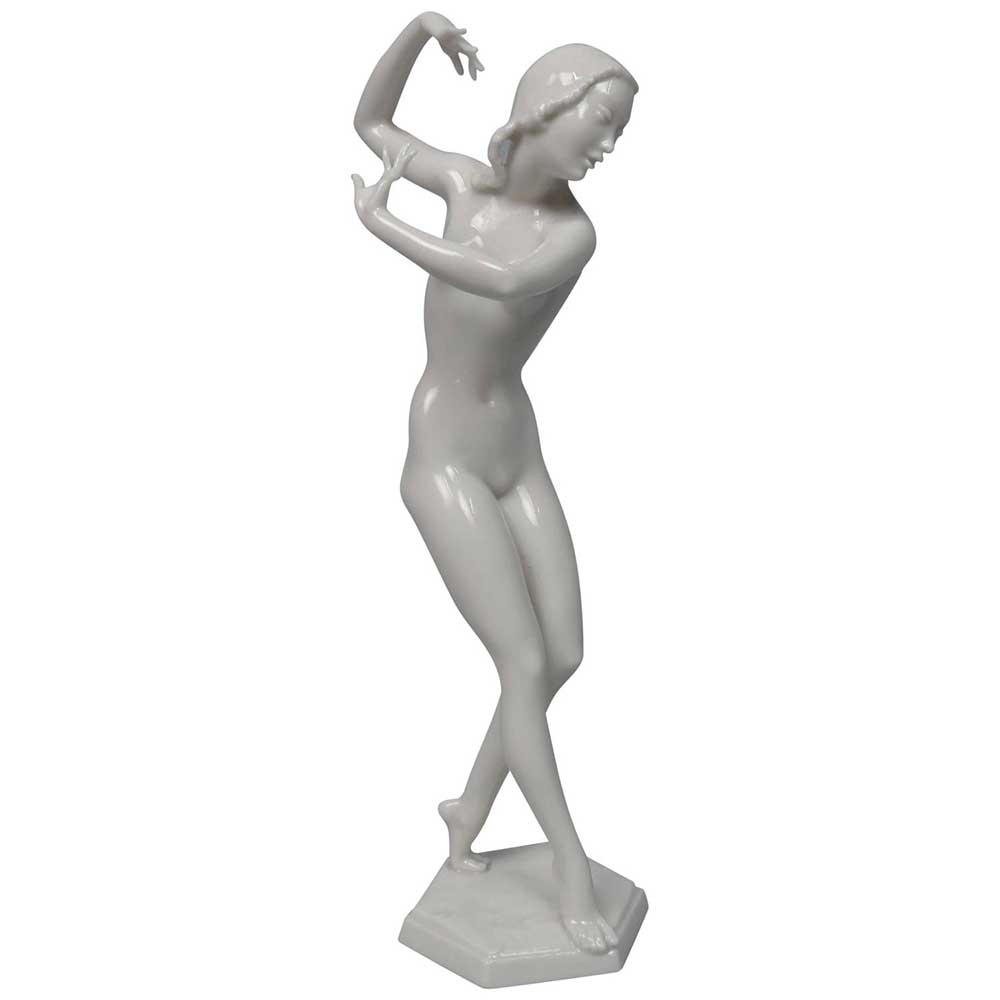
Hutschenreuther Andante by C. Werner
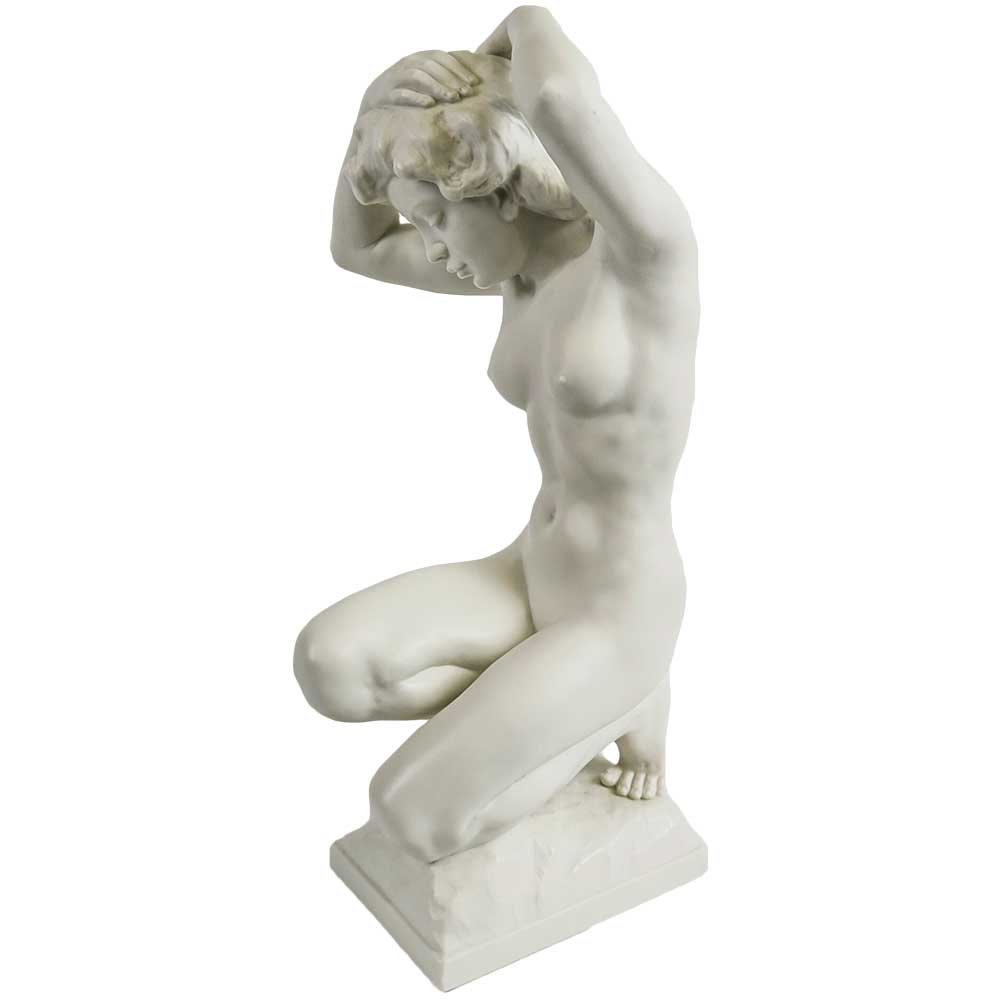
Hutschenreuther Nude by C. Werner
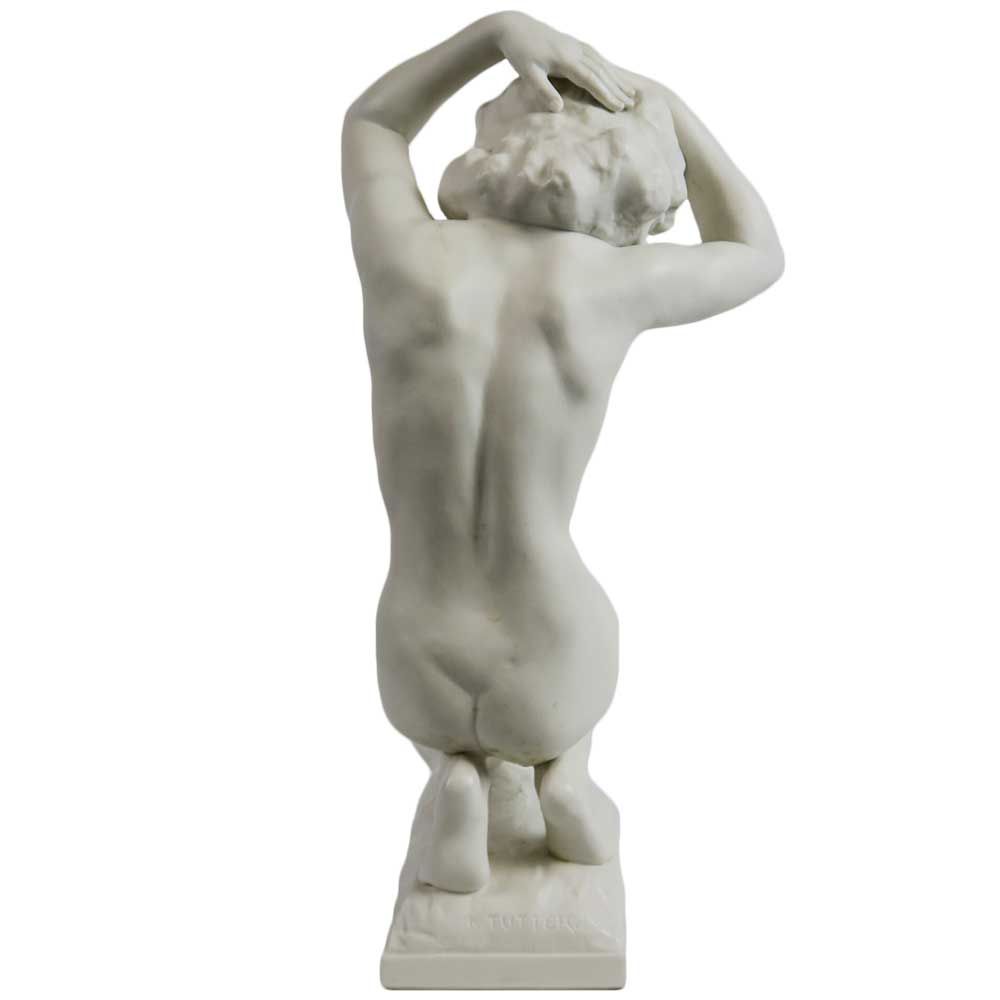
Hutschenreuther Nude back
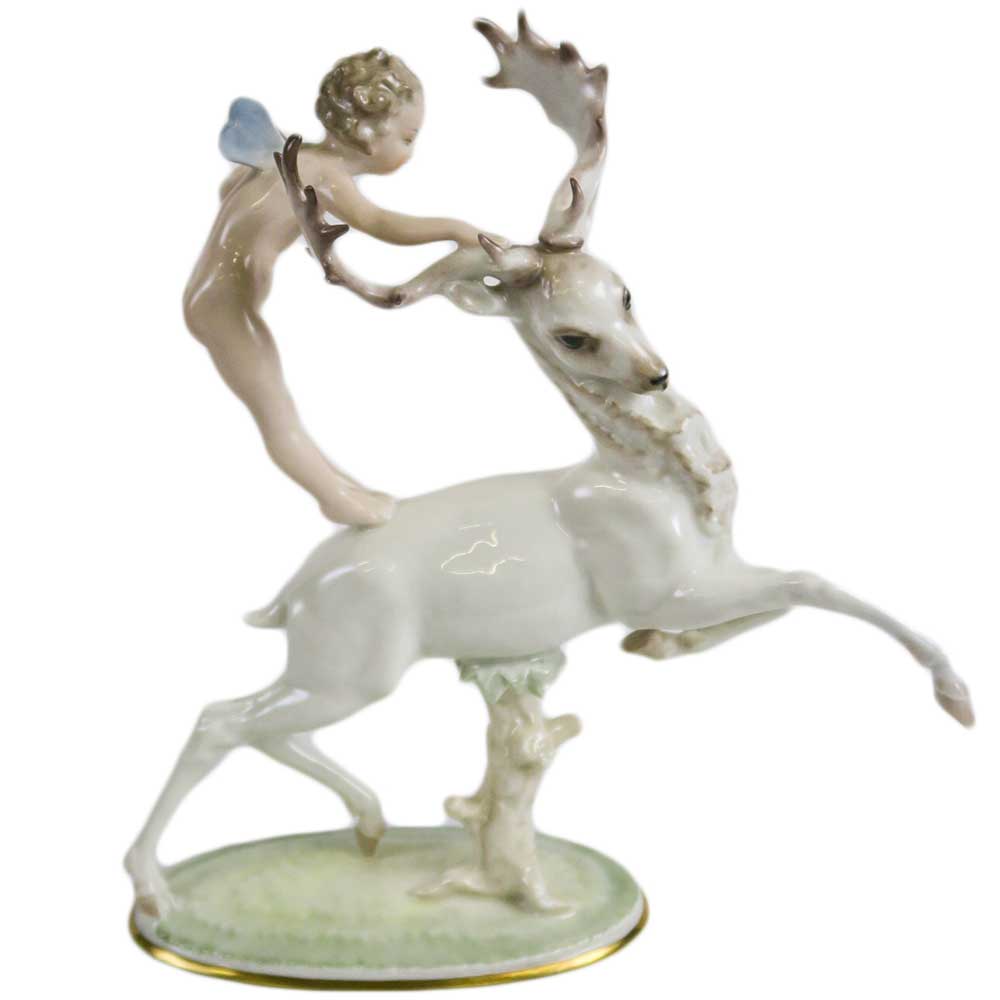
Hutschenreuther Fairy with Stag by C. Werner
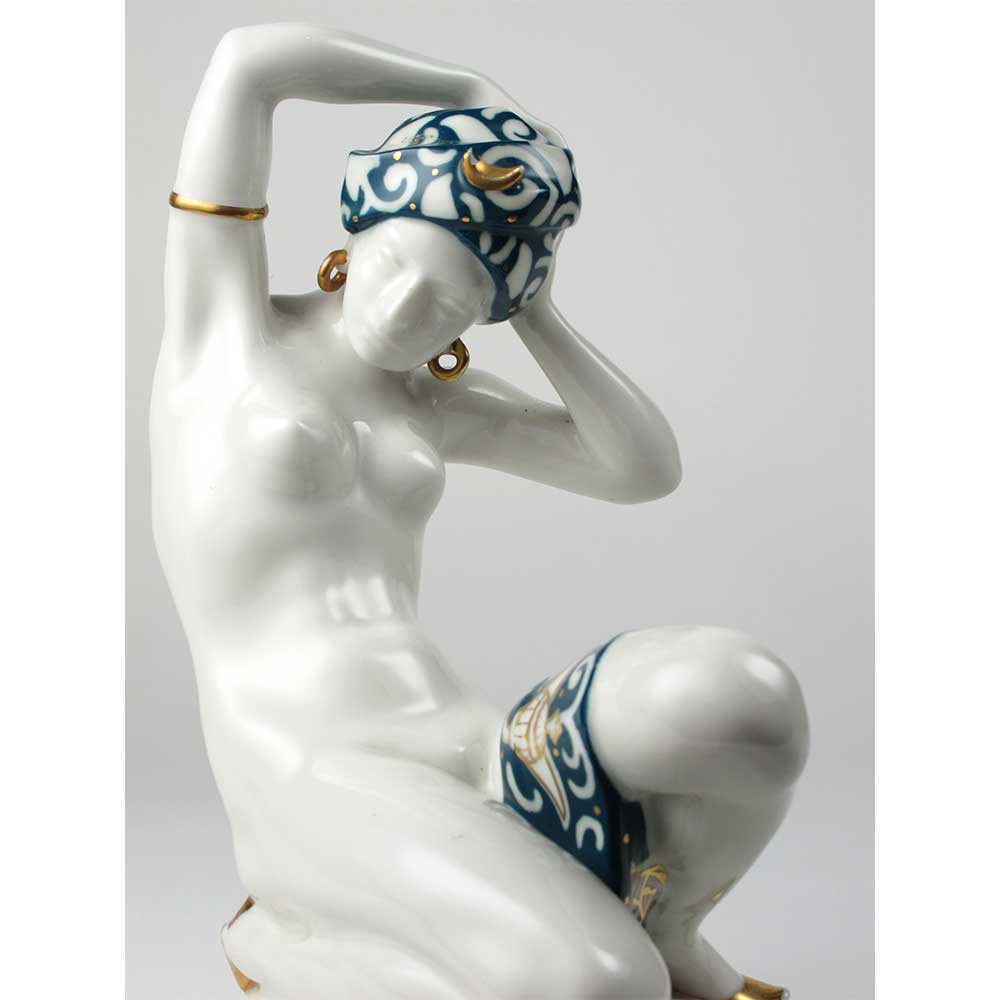
Hutschenreuther Nude in Turban by C. Werner
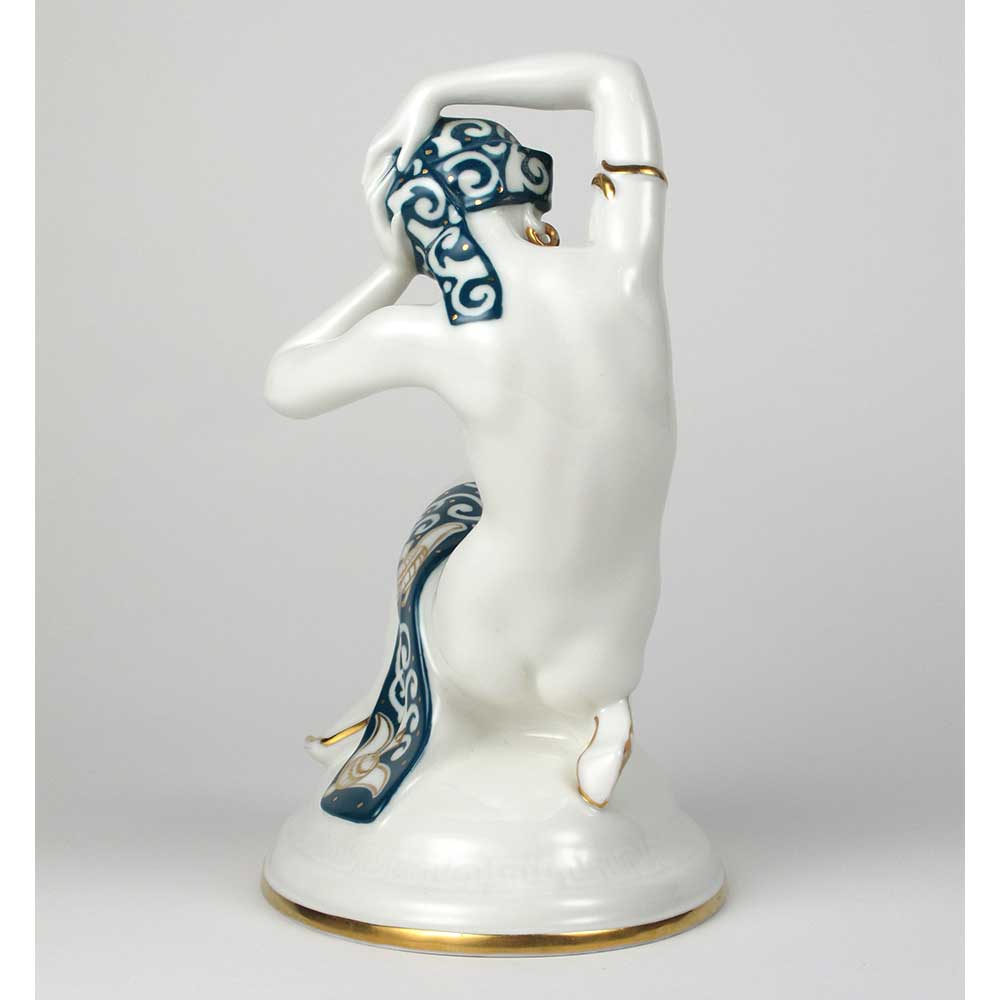
Hutschenreuther Nude in Turban back
